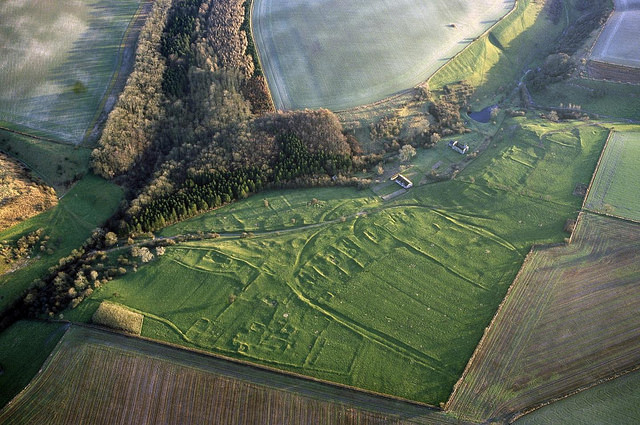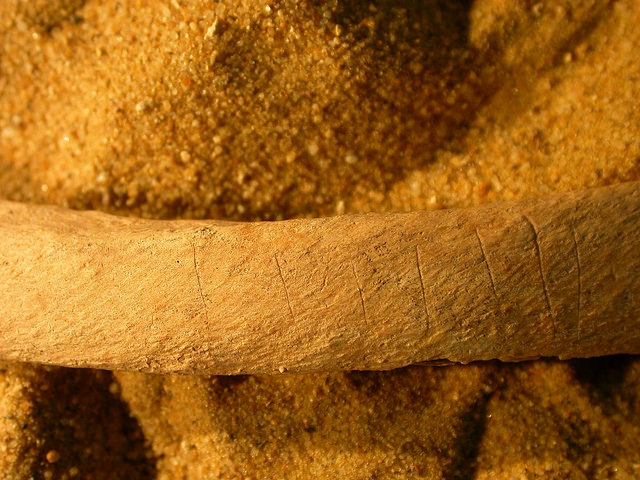
The team found that many of the bones from Wharram Percy in North Yorkshire showed knife-marks—suggesting the bodies had been decapitated and dismembered. There was also evidence of the burning of body parts and deliberate breaking of some bones after death.
The findings are published in an article in the Journal of Archaeological Science Reports. The research was led by Simon Mays, Human Skeletal Biologist at Historic England, working in collaboration with Alistair Pike, Professor of Archaeological Sciences at the University of Southampton.
In medieval times, there was a folk-belief that corpses could rise from their graves and roam the local area, spreading disease and violently assaulting those unlucky enough to encounter them. Restless corpses were usually thought to be caused by a lingering malevolent life-force in individuals who had committed evil deeds or created animosity when living.
Medieval writers describe a number of ways of dealing with revenants, one of which was to dig up the offending corpse, decapitate and dismember it, and burn the pieces in a fire. Perhaps the bones from Wharram Percy were parts of bodies that were mutilated and burnt because of medieval fears of corpses rising from their graves. The researchers considered other theories, but this explanation appears to be the most consistent with the alterations observed on the bones.
In some societies, people may be treated in unusual ways after death because they are viewed as outsiders. However, analysis of strontium isotopes in the teeth showed this was not the reason in this case. Professor Alistair Pike, who directed the isotopic analysis, explains: “Strontium isotopes in teeth reflect the geology on which an individual was living as their teeth formed in childhood. A match between the isotopes in the teeth and the geology around Wharram Percy suggests they grew up in an area close to where they were buried, possibly in the village. This was surprising to us, as we first wondered if the unusual treatment of the bodies might relate to their being from further afield, rather than local.”
Famines were quite common in medieval times, so another possibility might be that the remains were of corpses that had been cannibalised by starving villagers. However, the evidence did not seem to fit. For example, in cannibalism, knife marks on bone tend to cluster around major muscle attachments or large joints, but at Wharram Percy the knife marks were not at these locations but mainly in the head and neck area.
______________________________________
This is the Wharram Percy Medieval village, North Yorkshire, UK. Credit: Historic England
______________________________________________________
Knife marks on external surfaces of two rib bone fragments. Credit: Historic England
____________________________________________
Simon Mays concludes: “The idea that the Wharram Percy bones are the remains of corpses burnt and dismembered to stop them walking from their graves seems to fit the evidence best. If we are right, then this is the first good archaeological evidence we have for this practice. It shows us a dark side of medieval beliefs and provides a graphic reminder of how different the medieval view of the world was from our own.”
The bones come from the deserted medieval village of Wharram Percy, North Yorkshire, a site managed by English Heritage. There was a total of 137 bones representing the mixed remains of at least ten individuals. They were buried in a pit in the settlement part of the site. They date from the 11th-14th centuries AD.
Article Source: University of Southampton news release.
__________________________________________________
Subscribe to Popular Archaeology Premium. Available on all laptops and mobile devices, and still the industry’s best value at only $9.00 annually.
___________________________________________
Travel and learn with Far Horizons.
____________________________________________
This richly illustrated issue includes the following stories: Recent findings shedding new light on the whereabouts of the remains of Philip of Macedon, father of Alexander the Great; how an archaeologist-sculptor is bringing bones of the dead back to life; archaeologists uncovering town life at the dawn of civilization; an exclusive interview with internationally acclaimed archaeologist James M. Adovasio about what makes the Meadowcroft Rockshelter prominent in the ongoing search for the first Americans; what archaeologists are finding at the site of the ancient city of Gath, the home town of the biblical Philistine giant, Goliath; and how scientists are redrawing the picture of human evolution in Europe. Find it on Amazon.com.









